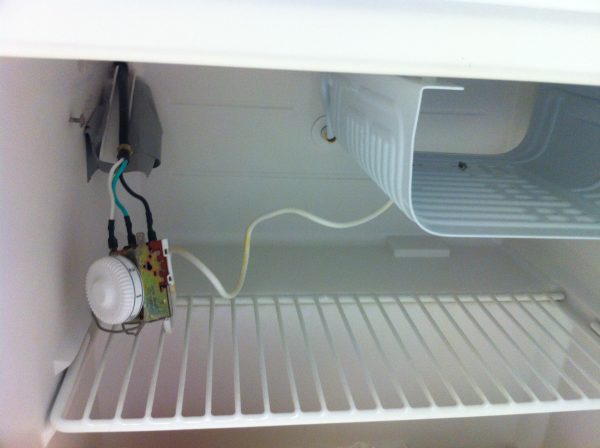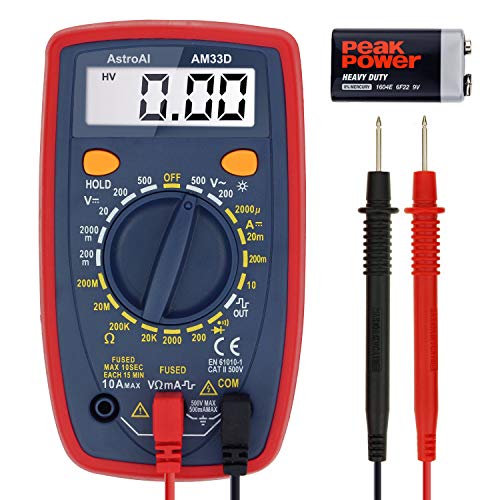
Knowing how to test a refrigerator thermostat comes in handy in different cases.
For instance, if you notice a sudden spike or dip in temperature, then a faulty thermostat may be the culprit.
This post, however, offers a stepwise guide on how to test a thermostat. It also proffers likely solutions if it turns out that the thermostat is faulty.
Table of Contents
How to Test a Refrigerator Thermostat – A Stepwise Guide
- Examine the thermostat control
The first thing to check is the thermostat control itself.
This is because it is the most common cause of major temperature changes in a refrigerator.
If all the items in your fridge are frozen, check the thermostat to know if you set it to the highest level.
In the same way, if your food items are getting spoiled due to high temperature in the fridge, check if the thermostat is set to the lowest level.
- Get good access to the thermostat
This is usually necessary especially if you noticed that there was nothing wrong when you carried out step 1.
But, whatever you do, ensure that the fridge is unplugged from the power source before you carry out this step.
To access the thermostat, get every item around the thermostat out of the fridge so that you can work comfortably.
You probably need a flashlight for this step since the interior lights will be off while you do this.
Remove the plastic cover over the thermostat to gain full access to the wires that control the temperature.
In most cases, you would have to remove the dial before the cover can go off.
- Take the readings
Firstly, turn the thermostat to the coldest level.
Afterward, remove the two lead wires attached to the thermostat.
Then, set your volt-ohm multimeter to RX1 and place the multimeter probes on each terminal.
The multimeter should read zero. If it doesn’t, then it is usually an indication that the thermostat needs to be replaced.
Don’t have a multimeter? You actually need one — not just for this purpose but for other home appliances you may want to test.
So, if you need one, we recommend the bestselling, affordable, and highly-rated AstroAI Digital Multimeter with Ohm Volt Amp and Diode Voltage Tester Meter.
This volt-ohm multimeter is easy to use, troubleshoots home appliances safely, and comes with a double fuse as an anti-burn safety measure. It also comes with a built-in kickstand so that you can use it in hands-free mode.
[amalinkspro type=”cta-btn-css” ctabtn-id=”” asin=”B01ISAMUA6″ apilink=”https://www.amazon.com/dp/B01ISAMUA6?tag=refrigeratorsreviewed-20&linkCode=osi&th=1&psc=1″ addtocart=”false” new-window=”true” nofollow=”true” alignment=”alignright”]Click here to check out and buy this multimeter on Amazon[/amalinkspro]
- Test it in a working freezer
If your multimeter gave a zero reading as indicated above, then there’s a fair chance that it is still working fine.
Next, remove the entire thermostat from your refrigerator and turn the dial to the warmest setting. Then install it in a working freezer for about 30 minutes.
Afterward, use your multimeter to probe the wires again.
This should give you a reading of infinity if the thermostat is fine. If it doesn’t, then you may need to replace your refrigerator thermostat.
Once you’re sure your thermostat is still working fine, install it back into your refrigerator and check for other causes of the temperature change.
It may be that the coils are clogged or that the condenser is bad.
Check out these other in-depth articles/reviews…
- Wagan 6-Quart 12V Personal Cooler/Warmer–In depth Review
- What is a French Door Refrigerator?
- How To Keep Ice Cream Frozen In A Cooler [Detailed Guide]
- Westinghouse 8-Bottle Wine Cooler — Detailed Review
- How Long Does It Take to Defrost a Refrigerator Freezer?
- Tibek 12V Mini Fridge/Warmer with Automatic Locking Handle — In-Depth Review
How to Test a Refrigerator Thermostat — A Quick Recap!
Your refrigerator thermostat is the first thing you want to check when you notice a sudden temperature difference.
Ensure to turn off the power source to keep yourself safe during the process.
If it turns out that your thermostat was the problem, contact the manufacturer for details on how to get it replaced.
Otherwise, you may need to call a professional.
You can also check out this video for a visual guide on how to test your refrigerator’s thermostat:
Want to know what to do if your refrigerator stops working? Learn possible reasons and how to solve them here.
How to Test a Refrigerator Thermostat — Related FAQs
What is the purpose of a refrigerator thermostat?
Without a refrigerator thermostat, a refrigerator cannot maintain the temperature at a particular level.
Leaving a refrigerator running all the time might risk cooling your food items too much or not enough. If you notice that some things in the refrigerator have become frozen, you can set the temperature to be warmer. If the food items get spoiled quickly because they’re not cold enough, you can also set the temperature to be colder.
In short, what the thermostat does is regulate the temperature in the refrigerator.
How does a refrigerator thermostat work?
A refrigerator thermostat is a master behind the refrigerator cooling system.
It is found inside the refrigerator and has a knob that lets a person adjust the temperature setting. Once a person sets the desired temperature, the thermostat maintains that temperature by controlling how electricity flows to the compressor. The compressor is responsible for pumping the refrigerant using the coils.
Therefore, when the air in the refrigerator is at the desired temperature, the thermostat stops electricity from flowing to the compressor. And when the thermostat feels too much heat, it lets electricity flow, activating the compressor.
Why do refrigerator thermostats fail?
- Loss of gas inside the tube.
- Damage to the wiring attached to the control body
Loss of gas inside the tube can be caused by a hole or crack in the tube, no matter how tiny. When the gas leaks out, the pressure in the thermostat control body drops to nothing, making the compressor think that the refrigerator is cool enough and stops by itself.
Also, the wiring attached to the thermostat control body might become broken or disconnected, causing the compressor not to turn on and not get cooling.
How do I know if my refrigerator thermostat is bad?
- When your fridge is not cool enough: If you notice that the food items in the refrigerator are not as cold as you expected them to be or that the temperature in your refrigerator is not appropriate, there might be a fault in the thermostat because the thermostat regulates the temperature in the refrigerator and also keep things chilled.
- When your refrigerator is getting unusually cold: If the food items are getting frozen within the other compartments, that’s a sign of a thermostat malfunction.
- When there’s a fluctuation in the refrigerator temperature: The normal temperature for keeping food items cold is usually between 320F to 400F. A slight fluctuation in the temperature can spoil the food items in the refrigerator. This is also a sign of a faulty thermostat.
How do I troubleshoot a refrigerator thermostat?
- Remove the cover to the thermostat and replace the batteries, if appropriate.
- Check the circuit panel for a tripped breaker.
- Remove the cover to check the filament in the fuse. If you find it separated, remove the fuse and take it to a hardware store for an exact one.
- Check the wires because a wire contact may have come loose. To check the wire contacts, remove the thermostat from where it is mounted on the wall. Refer to the owner’s manual to guide, otherwise, check for available manuals online.
How do I reset a refrigerator thermostat?
- Check the back of the refrigerator for its power cord.
- Disconnect the power cord from the wall outlet. You might hear knocking noises, it’s normal. Then, leave the refrigerator unplugged for some minutes.
- Turn the refrigerator and freezer controls to OFF and 0 inside the refrigerator. Then, plug the refrigerator back into the wall outlet.
- Set the refrigerator and freezer controls to the desired setting.
- Leave the refrigerator for 24 hours to adjust to a stable temperature.
Get Instant Help — Ask An Experienced Verified Appliance Technician
Need expert help? Click here to use the chat box on this page to speak with a verified appliance technician right away. No need for expensive in-home service calls. No appointments. No waiting.
